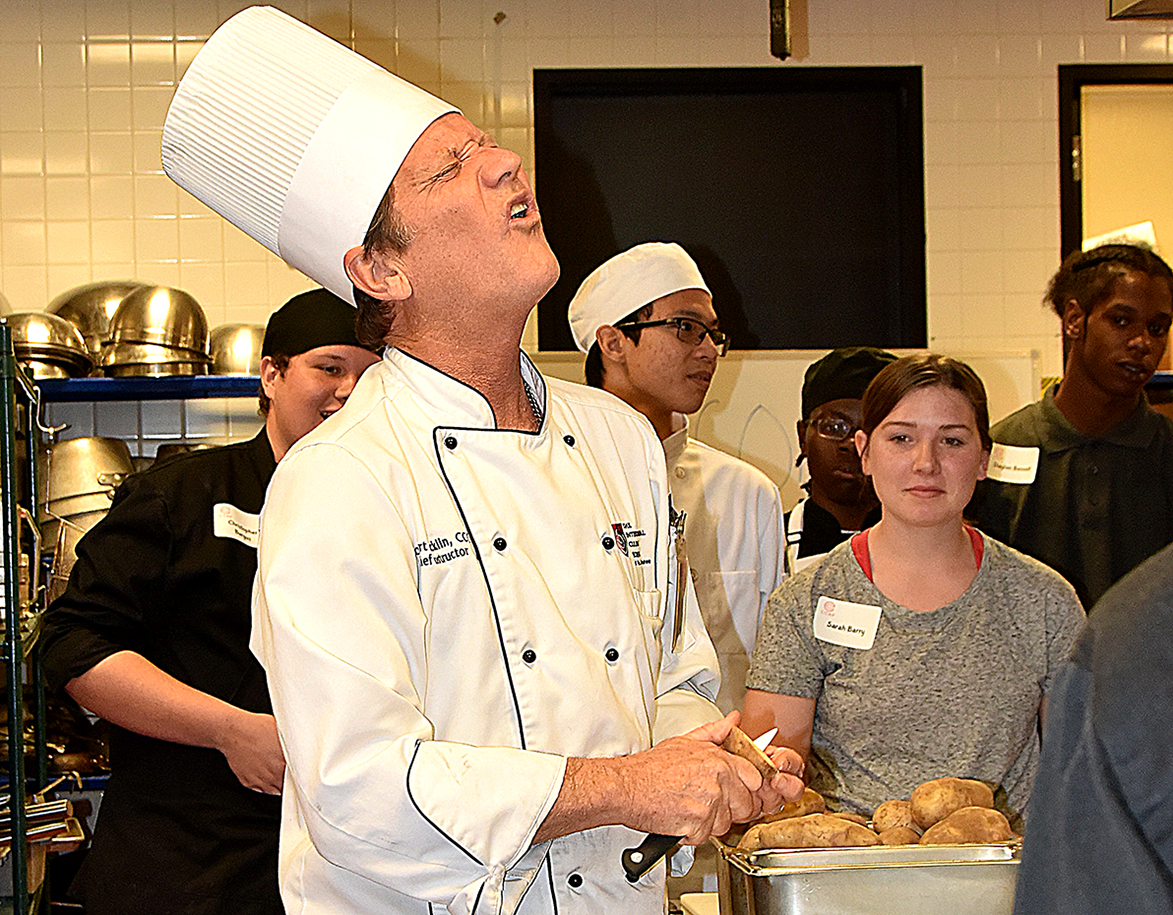Post
preliminaries round-up of judges' assessment says this year's CCAP senior level
competitors are among the best prepared for CCAP finals.
Hang on a second,
there. That means your kitchen
skills are essentially good.
Yeah - that's it,
there's not much more….except…
You got it.
There's more - okay, there's a good bit more you're gonna want to keep in mind
as you practice.
Let's start with
a few observations from some of the judges in this year's preliminary.
CCAP Arizona
Director Jill Smith's a good observer and judge - and she's had a chance to see
many students at practices, too.
"Right
now," she says, "I'd say the key word for these students to remember
is balance:
balance in both taste and presentation. Flavors need to work in harmony in CCAP
recipes.
"Also, it
will help each of them if they write out each
step in the recipes - and then memorize each recipe."
For FnB
owner/chef Charleen Badman the key in competition is "Organization. Once
you're organized, you really can see each step in the recipe. And then when you're cooking, remember
to taste - and breathe!"
Rebecca Tillman,
executive chef at the Pointe Hilton Squaw Peak Resort, says, "It seemed to me most of the
students were either clearly under - or way over - in their timing to complete
their dishes.
"They need
to relax a little more, so they aren't so nervous. And many need to stop watching their fellow competitors and
focus on the task they need to complete."
"It's
practice. Each student really just needs to keep practicing," says Doug
Robson, chef/owner of Gallo Blanco and Otro Café.
"You know,
go to the grocery and pick up a ten-pound sack of potatoes and practice your
cuts. And temperature's important, so get your pans hot enough before you start
cooking." [Tip: many dollar stores
carry graceries - check to see if your local store does. This is a good source
for "practice" vegetables - as are other budget food stores (like
Smart'n'Final)]
Canyon Ranch's
executive chef Justin Morrow says each student only needs to do one thing to
prep for finals: "Practice. It's just practice. Practice your timing,
practice your cuts. And remember how important sanitation is."
And Andrew
Helmandollar, executive chef at Talking Stick, had some simpole advice:
"Stay calm and keep cooking! - Oh, and get your pans hot enough to cook
in."
Coming next: How to be a real
contender in the culinary games - overall tips for a great competition. Also…do
you know how to do an interview? We have a few guidelines…


















































